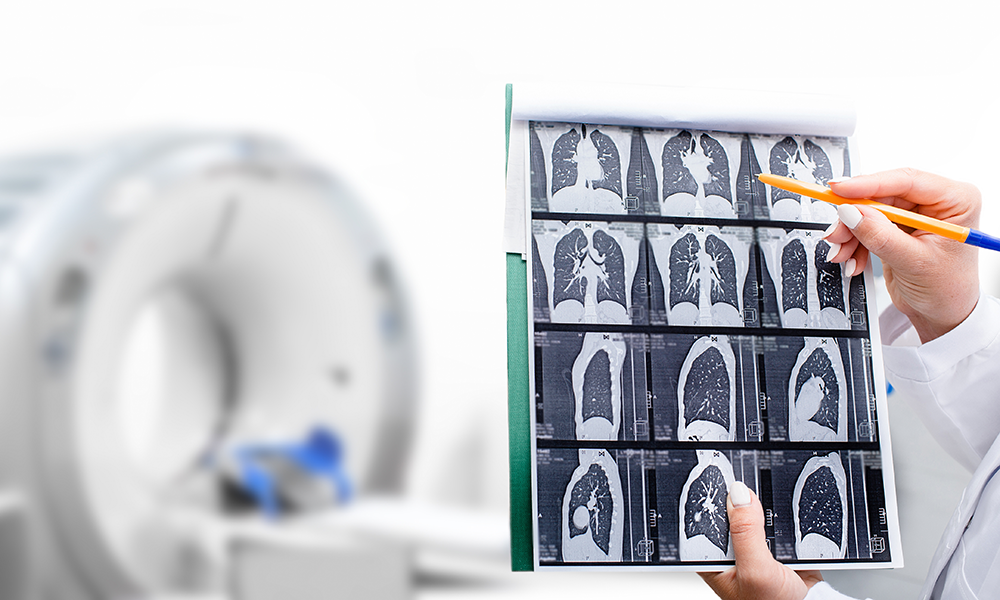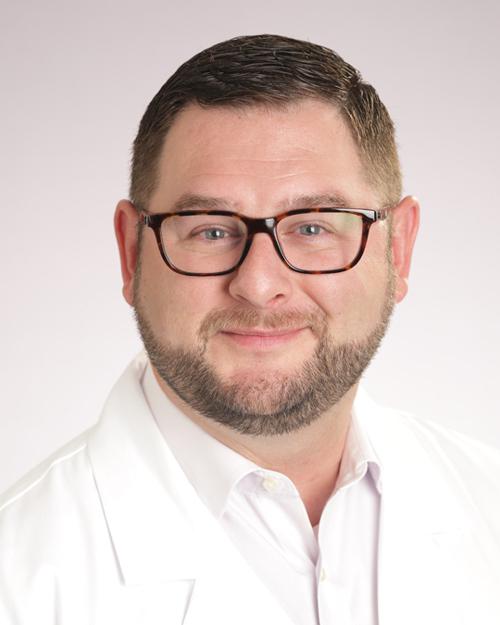If we could find lung cancers earlier, it would make a marked improvement in our ability to help patients survive this disease and improve health equity in Louisville and throughout the state.

As a medical oncologist at Norton Cancer Institute, I’ve seen remarkable advances in how we treat lung cancer. Lung cancers caught early can now often be successfully treated.
Unfortunately, Kentucky has a massive lung cancer problem. We have the highest rate of lung cancer in the nation, and we rank 45th among the 49 states on catching cancer at an early stage. If we can catch lung cancer when it is still localized, the five-year survival rate is 60%. If the cancer has metastasized, survival drops to 6%.
In Kentucky, lung cancer is often caught too late. A dispiriting 46% of lung cancer cases are diagnosed at Stage 4, after the cancer has metastasized, and the distribution of who is diagnosed later in the course of the disease weighs most heavily on minorities and patients who are socially disadvantaged.
If we somehow could find these cases earlier, it would make a marked improvement in our ability to help patients survive this disease and improve health equity in Louisville and throughout the state.
In one telling example close to home, the Russell and Cherokee Triangle neighborhoods in Louisville are only 4.6 miles apart, but there is an eight-year difference in life expectancy. The incidence of lung cancer death is higher in the Russell neighborhood, and screening rates are lower.
Screening for lung cancer is how we detect lung cancer when it is most curable. Lung cancer screening should no longer be a chest X-ray but a noncontrast CT scan. There is no IV and no pain. The scan itself takes 10 to 20 seconds, and the whole appointment should be completed in half an hour.
The lung cancer screening difference
Screening makes an enormous difference. A large trial found screening people ages 55 to 74 with a 30-year pack history — for example, a pack a day for 30 years — reduced lung cancer mortality by 20% and all-cause mortality by 6.7%.
When lung cancer is detected at Stage 1, surgical resection remains the gold standard for treatment. Most patients don’t need anything else. If the patient is not a surgical candidate or refuses surgery, stereotactic radiation is a newer option for curative local control.
Stage 2 lung cancer patients often receive surgery and/or chemotherapy and immunotherapy. Patients in Stage 3 often receive chemotherapy and radiation followed by immunotherapy. Patients in Stage 4 often receive chemotherapy and immunotherapy or targeted chemotherapy if applicable. The treatment options vary widely so accurate staging utilizing imaging is important.
Black smokers and patients who are socioeconomically disadvantaged have a higher incidence of early onset non-small cell lung cancer and have a shorter smoking history at diagnosis. They are also more likely to be diagnosed at a more advanced stage, meaning they are less likely to get surgery, the most desirable option for treatment.
Taking this into account, the U.S. Preventive Services Task Force now recommends annual lung cancer screening begin at age 50 for anyone who has 20 pack years and either still smokes or has quit within the last 15 years.
Refer a patient
To refer a patient to Norton Cancer Institute for lung cancer screening, visit Norton EpicLink and open an order for Oncology.
In the state as a whole, 15.9% of eligible Kentuckians have received screening. For Black Kentuckians, that figure is 7.9%. As the largest hospital system that covers Jefferson County, where almost half the state’s Black population lives, we need to address these inequities.
We started a lung screening program at Norton Cancer Institute in 2016. Since its inception, we’ve screened close to 22,000 patients and detected more than 400 lung cancers, almost half of them at Stage 1.
The scans are first read by a radiologist, and then, if there’s any concern, the patient is referred to our tumor board, which consists of a thoracic surgeon, a pulmonologist, a radiation oncologist and me. We review the scans and come up with a plan on what to do next.
Annual lung cancer screenings for patients who are eligible should be routine — no different than mammograms or colonoscopies.
Right now, lung cancer is the No. 3 most common cancer, behind breast and colon cancers, but it is by far the biggest killer. Lung cancer screening can change that and improve health equity at the same time.
Adam D. Lye, M.D., sees patients at Norton Cancer Institute – Brownsboro.

